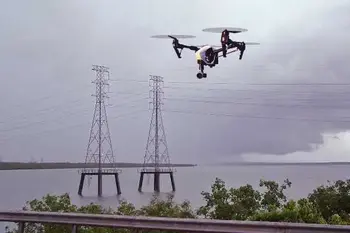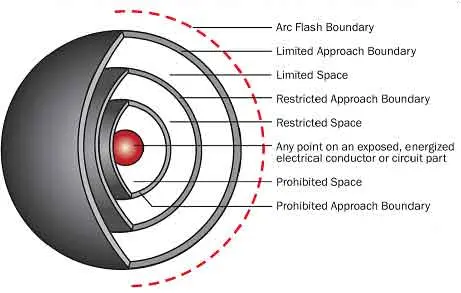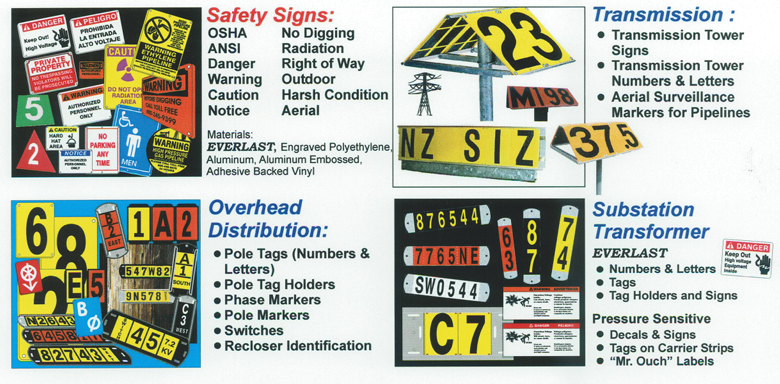Construction Drones
By G Fox, Editor, The Electricity Forum

Substation Relay Protection Training
Our customized live online or in‑person group training can be delivered to your staff at your location.

- Live Online
- 12 hours Instructor-led
- Group Training Available
Download Our OSHA FS3529 Fact Sheet – Lockout/Tagout Safety Procedures

- Learn how to disable machines and isolate energy sources safely
- Follow OSHA guidelines for developing energy control programs
- Protect workers with proper lockout devices and annual inspections
Construction drone enables RTK surveying, LiDAR mapping, photogrammetry, and thermal inspection for electrical infrastructure, substations, and transmission lines, supporting BIM updates, progress tracking, orthomosaic planning, and safe, remote condition monitoring.
What Is a Construction Drone?
A construction drone is an unmanned aerial system for RTK surveying, LiDAR, and thermal inspection of electrical assets.
✅ RTK/GNSS mapping enhances substation as-built accuracy
✅ Thermal imaging detects faults in switchgear and busbars
✅ LiDAR/photogrammetry supports BIM updates and clash checks
Fingertip Cost Savings for T&D Industry Infrastructure
The surge of interest in construction drones to be used in the T&D infrastructure construction process is growing and advancing in leaps and bounds as the North American utilities companies realize the multi-potential uses of this technology. Not since the introduction of the mobile computer devices to the utilities sector has there been so much recognizable potential for this technology, in so many different capacities. The drone world has begun to turn its eye to the electrical construction industry regarding the building of power plants to electrical substations to distribution systems, and the potential for savings and improvements is staggering. The drone technology for surveying, safety, security and even resource tracking is now available, literally at ones fingertips.
T&D Construction Booms
In 2015 North American Electric T&D industry exceeded $49 billion on T&D construction projects from power plants to electrical substations to distribution systems. That is higher than any of the previous years since the 2009; To ensure these investments translate into reliable assets, many teams reference an electrical substation design roadmap when scoping upgrades and new builds.
Regulatory requirements and incentives, fueled by the need to improve the reliability and capacity of the North American T&D network, provides an opportunity for utilities and developers to make substantial investments to replace, upgrade, and expand new and existing T&D infrastructure. Modern reliability goals are increasingly met through substation automation that integrates protection, control, and monitoring.
Sign Up for Electricity Forum’s Electrical Substations Newsletter
Stay informed with our FREE Electrical Substations Newsletter — get the latest news, breakthrough technologies, and expert insights, delivered straight to your inbox.
T&D Infrastructure Overview
- Power Plant - Electricity is generated at the power plant at a relatively low voltage
- High Voltage Transformer – Voltage is increased by transformers from hundreds to hundreds of thousands of volts for transportation over long distances.
- Transmission Lines – High voltage transmission lines carry power from the power plant to the substations.
- Transmission Substations – Contain high voltage switches allowing the connection, isolation or maintenance of high-power lines.
- Distribution Substations – Contain transformers that “step-down” reduce the high voltage power to a lower level for distribution to the end user.
- Distribution Systems – Main/primary power lines and low voltage secondary power lines deliver electricity via overhead or underground wires/cables to the end user.
- Service Connection – Power line that connects the electricity to a meter at the end users location.
For readers new to the topic, this flow is anchored by understanding what an electrical substation is and how it fits between generation and load.
Construction Drones
Companies like 3D Robotics, DroneDeploy and Kespry to name a few, offer “smart construction drones”. As an example of the seemingly endless technology, Kespry’s drone the Kespry 2.0 can fly over 150 acres in 30 minutes providing aerial data. Even self-built and off the shelf drones have the capability to provide an astounding range of information with the use of basic attachments and software. Drone imagery can directly support 3D substation design utilizing AutoCAD by validating clearances and as-built conditions.
Listed below are a few of the technically advanced attributes which the new “smart drones” are capable of producing.
Site Mapping with Drones
- completing accurate 3D models of existing and new structures
- overlays of the original plans with the recorded data
- accurate topographical maps
- temporary roads and structures can be planned in advance and plotted into the 3D maps
These models become foundational data for planning a digital substation where systems are engineered around accurate geospatial context.
Materials & Inventory Controls
- determine the size of stockpiles like gravel, lumber, and rebar
- identify equipment and machinery on site
- inventory updates, useable materials automatically assessed and equipment requirements calculated
- provides accurate data for the project manager
- eliminate unnecessary spending
- real time information
- real time and forecasted business decisions.
Further Features
- cloud connectivity
- monitor progress (on more than one project if necessary)
- show progress to clients
- keep extensive 3D records of the changes on a day by day basis
- structural inspection
- authenticate work done from office or home
- security service; perform automated patrols of a defined area, recording security footage (even utilizing infrared cameras)
Routine visual patrols also help prioritize maintenance on critical components like the substation breaker so outages can be prevented proactively.
Test Your Knowledge About Electrical Substations!
Think you know Electrical Substations? Take our quick, interactive quiz and test your knowledge in minutes.
- Instantly see your results and score
- Identify strengths and areas for improvement
- Challenge yourself on real-world electrical topics
There are many construction industry security services and construction industry management services which are now realizing the advantages of employing the use of drones in the building of power plants to electrical substations to distribution systems. Basically one construction drone can perform most of the features mentioned above without the requirement of specialist equipment. Their software handles the raw data and translates it into meaningful and actionable information throughout all aspects of a T&D infrastructure construction project and post project. The cost savings and time savings compared to traditional methods will be staggering and very hard for an electrical utilities company to ignore. Upskilling project teams through focused electrical substation training ensures drone-derived insights are translated into safe, compliant decisions.








